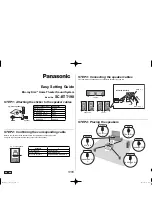
34
C. To start the weld, hold the torch so the welding wire is
approximately 1/4-in. from the work, then press the
torch trigger.
D. The welding wire should be pointed into the joint at
angles of approximately 45
0
for fillet welds, and approxi-
mately 90
0
for butt welds, (Fig 4.7).
E. The torch angle relative to the length of the weld should
be approximately 10
0
from the vertical (Fig. 4.8).
F. When welding in the vertical position, traveling either up
or down, it is very important to keep the arc on the leading
edge of the puddle to ensure complete penetration.
G. Some welders who are accustomed to welding with stick
electrodes may tend to push the torch into the weld. This
is neither necessary nor desirable, since the wire electrode
is being mechanically fed into the weld.
Please note that the Wire Speed control can be adjusted
for the gauge of metal to be welded. however, the coarse
Voltage range and fine Voltage setting must not be
switched while welding.
H. To stop the weld, release the trigger and pull the torch
from the work. When leaving equipment unattended,
always shut OFF and disconnect all input power and shut
off shielding gas at source.
figure 4.7 angle of Weld to Joint
sectIon 4
operatIon
Connect cables for “DCEP”; torch polarity cable to
the POS (+) output Steep Slope receptacle and the
“Work” cable to the NEG (-) output terminal. See
Figure 3.5.
For “DCEN", torch polarity cable to the NEG (-) output
receptacle and the “Work” cable to the POS (+) Flat
Slope output receptacle . See Figure 3.7.
4.3.4 WelDIng operatIon
A. Turn Power switch to ON - be careful not to operate
the torch switch.
B. Before starting the weld, clip off the end of the wire
with insulated cutters so the welding wire extends
about 1/2-inch beyond the end of the nozzle.
power supply contactor becomes energized the mo-
ment the torch trigger is depressed. arcing can occur
if the wire is brought to a ground. Keep the torch away
from ground until welding is to begin.
Summary of Contents for Migmaster 275
Page 4: ...4 TABLE OF CONTENT ...
Page 20: ...20 section 2 INTRODUCTION ...
Page 28: ...28 section 3 INSTALLATION ...
Page 42: ...42 section 5 SERVICE ...
Page 46: ...46 section 6 REPLACEMENT PARTS ...
Page 48: ......
Page 49: ......
Page 50: ......
Page 51: ......
Page 52: ......
Page 53: ......
Page 54: ......
Page 55: ......
Page 56: ......
Page 57: ......
















































